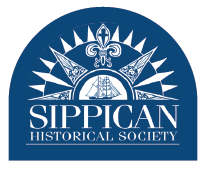
Thanksgiving is just a day away, and in many households, busy hands have already begun preparing for the annual feast. Notwithstanding the recent appearance of a meatless “tofurkey” option, a golden roasted turkey, like the one immortalized in Norman Rockwell’s famous illustration, is by far the most popular and traditional main course on American tables. Side dishes vary, depending on personal favorites and family traditions, but there will often be an overflowing bowl of mashed potatoes, smaller bowls of green beans or peas, a sweet potato casserole (with or without marshmallows), hopefully a healthy salad or two, and a basket of warm rolls just begging to be slathered in butter.
But the pièce de résistance for the Thanksgiving dinner might just be what appears after the main meal is finished – the PIES. Pumpkin, apple, pecan, cherry, chocolate cream, and blueberry pies have graced many an American table (the aptly named “groaning board”), with as many variations as there are chefs eager to create these homemade pastry treats. Pies can even be edible works of art, with the delectable contents hidden beneath pastry lids artfully decorated with a variety of clever tools.
19th-century sailors knew a little something about making and decorating pies, although theirs were more often meat pies, since fresh fruit was severely lacking on most whaling ships. Not only did they make the pastry for their pies, however; they also made the tools used to create that pastry. One such tool is pictured above – the jagging wheel. Made of whalebone from the creatures prized for their oil, these tools were fashioned for a practical purpose, but often were cleverly crafted, and occasionally were breathtakingly beautiful.
The Sippican Historical Society received an astonishing donation of scrimshaw in 2017 from William Claflin, including more than 25 jagging wheels with a wide variety of shapes, sizes, and innovative features. The tool pictured above has a wheel for cutting the pastry, but also a fork for enjoying the pie once cooked. The serpentine figure is purely decorative, and it boggles the mind to imagine how something so delicate could have been carved from a single piece of whalebone. Similarly, the tool pictured below has a wheel for cutting, with an intricate leaf motif on the handle that also demonstrates amazing skill in carving. You can see more images of these stunning creations on the SHS website – just search “jagging wheel”; or better yet, come see our display of these truly remarkable items in the museum. Your appreciation – and perhaps your appetite – for pie-making will certainly be enhanced!
Happy Thanksgiving!

